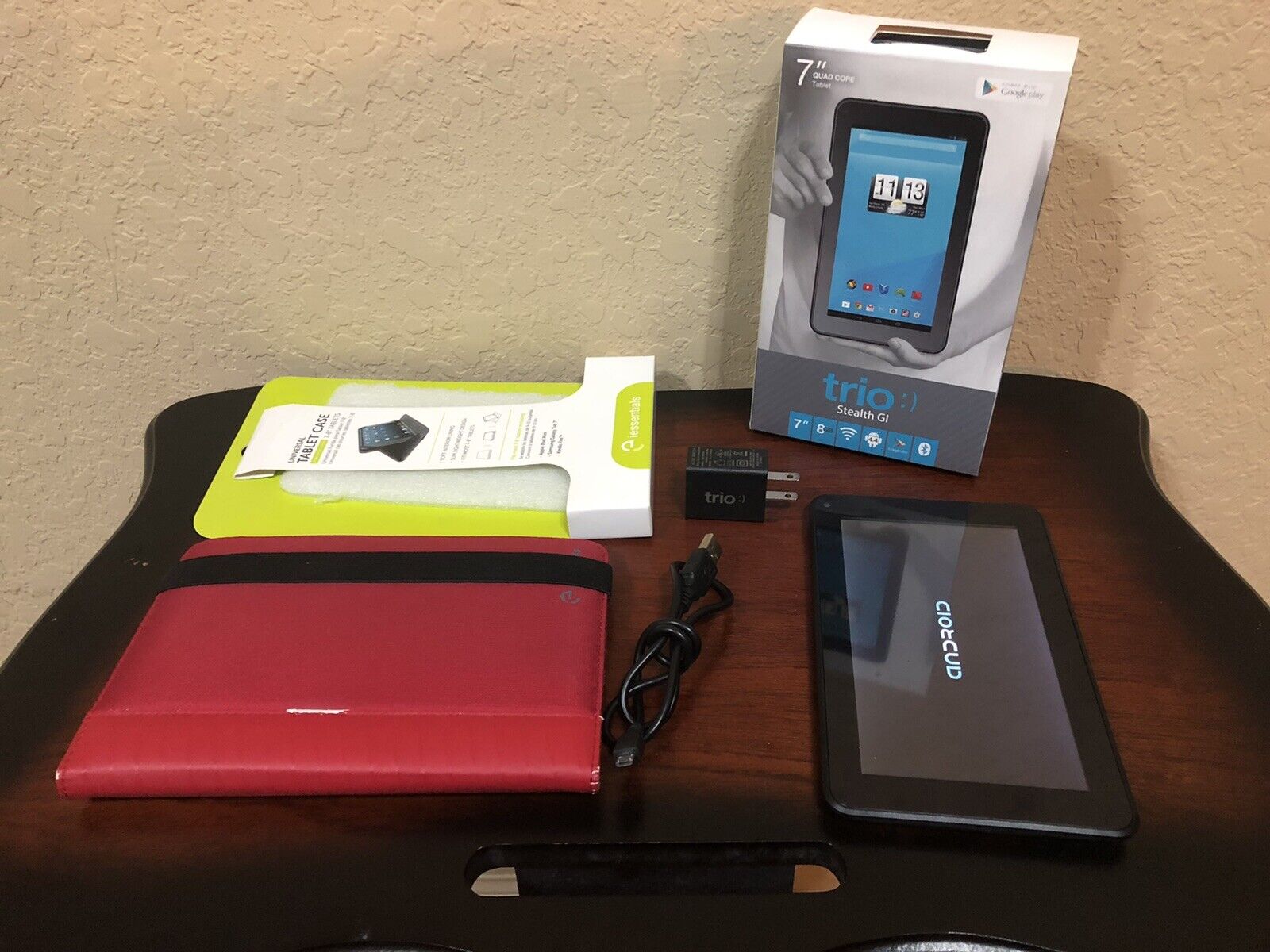
Lenovo Tab M8
The Lenovo Tab M8 is an excellent entry-level Android tablet offering impressive performance at an affordable price.
Key Features:
- Display Size: 7-inch HD display, perfect for videos, web browsing, and casual games.
- Processor: Quad-core processor running at 2GHz, ensuring smooth performance for everyday tasks.
- Storage: 32GB internal storage, expandable up to 1024GB via microSD card.
- Battery Life: Long battery life, ideal for all-day use.
- Design: Full metal cover, providing a premium look and feel.
- Operating System: Android 10 Pie, offering access to a wide range of apps and features.
Available on Amazon for around $48, the Lenovo Tab M8 is one of the most affordable quad-core Android tablets. Its compact size and lightweight design make it perfect for kids or anyone needing a portable device.
Samsung Galaxy Tab A9+
The Samsung Galaxy Tab A9+ is a mid-range Android tablet offering excellent value for money.
Key Features:
- Display Size: 8-inch display, ideal for movies, web browsing, and games.
- Processor: Quad-core processor, ensuring smooth performance for everyday tasks.
- Storage: 32GB internal storage, expandable up to 1TB via microSD card.
- Battery Life: Long battery life, lasting over 12 hours on a single charge.
- Design: Sleek design with a metallic finish, providing a premium look.
- Operating System: Android 11, offering access to a wide range of apps and features.
Available for around $300, the Samsung Galaxy Tab A9+ is an excellent mid-range option for those seeking a reliable Android tablet.
Amazon Fire HD 10
The Amazon Fire HD 10 is a budget-friendly Android tablet offering impressive performance at an affordable price.
Key Features:
- Display Size: 10-inch display, perfect for movies, web browsing, and games.
- Processor: Quad-core processor, ensuring smooth performance for everyday tasks.
- Storage: 32GB internal storage, expandable up to 512GB via microSD card.
- Battery Life: Long battery life, lasting over 12 hours on a single charge.
- Design: Sleek design with a plastic finish, providing a premium look.
- Operating System: Fire OS, optimized for Amazon services.
Available on Amazon for around $100, the Fire HD 10 is one of the most affordable quad-core Android tablets. Its compact size and lightweight design make it perfect for users needing a portable device.
Samsung Galaxy Tab S9 FE+
The Samsung Galaxy Tab S9 FE+ is a mid-range Android tablet offering excellent performance and features.
Key Features:
- Display Size: 11-inch display, ideal for movies, web browsing, and games.
- Processor: Quad-core processor, ensuring smooth performance for everyday tasks.
- Storage: 64GB internal storage, expandable up to 1TB via microSD card.
- Battery Life: Long battery life, lasting over 12 hours on a single charge.
- Design: Sleek design with a metallic finish, providing a premium look.
- Operating System: Android 11, offering access to a wide range of apps and features.
- Additional Features: Supports S Pen, making it ideal for artists and note-takers.
Available for around $400, the Samsung Galaxy Tab S9 FE+ is an excellent mid-range option for those seeking a reliable Android tablet with premium features.
OnePlus Pad
The OnePlus Pad is a high-end Android tablet offering impressive performance and features.
Key Features:
- Display Size: 11.61-inch display with a resolution of 2800 x 2000 pixels, perfect for movies, web browsing, and games.
- Processor: MediaTek Dimensity 9000 chip, providing fast performance for demanding tasks.
- Storage: 128GB internal storage, expandable up to 2TB via microSD card.
- Battery Life: Impressive battery life, lasting over 12 hours on a single charge.
- Design: Sleek design with a signature green color, providing a premium look.
- Operating System: Android 12, offering access to a wide range of apps and features.
- Additional Features: Supports fast charging and comes with a keyboard cover, making it ideal for productivity tasks.
Available for around $500, the OnePlus Pad is an excellent high-end option for those seeking a powerful Android tablet with premium features.
Samsung Galaxy Tab S9 Ultra
The Samsung Galaxy Tab S9 Ultra is a high-end Android tablet offering exceptional performance and features.
Key Features:
- Display Size: 14.6-inch display with a resolution of 2960 x 1848 pixels, perfect for movies, web browsing, and games.
- Processor: Qualcomm Snapdragon 8 Gen 2 chip, providing fast performance for demanding tasks.
- Storage: 256GB internal storage, expandable up to 1TB via microSD card.
- Battery Life: Impressive battery life, lasting over 12 hours on a single charge.
- Design: Sleek design with an IP68 rating, making it durable and water-resistant.
- Operating System: Android 12, offering access to a wide range of apps and features.
- Additional Features: Supports S Pen and comes with Samsung's DeX platform, making it ideal for productivity tasks.
Available for around $700, the Samsung Galaxy Tab S9 Ultra is an excellent high-end option for those seeking a powerful Android tablet with premium features.
Google Pixel Tablet
The Google Pixel Tablet is a mid-range Android tablet offering impressive performance and features.
Key Features:
- Display Size: 11-inch display with a resolution of 2560 x 1600 pixels, perfect for movies, web browsing, and games.
- Processor: Google Tensor G2 chip, providing fast performance for everyday tasks.
- Storage: 128GB internal storage, expandable up to 2TB via microSD card.
- Battery Life: Impressive battery life, lasting over 12 hours on a single charge.
- Design: Sleek design with a premium look and feel.
- Operating System: Android 12, offering access to a wide range of apps and features.
- Additional Features: Supports Google Assistant and comes with a charging speaker dock, making it ideal for entertainment tasks.
Available for around $400, the Google Pixel Tablet is an excellent mid-range option for those seeking a reliable Android tablet with premium features.
